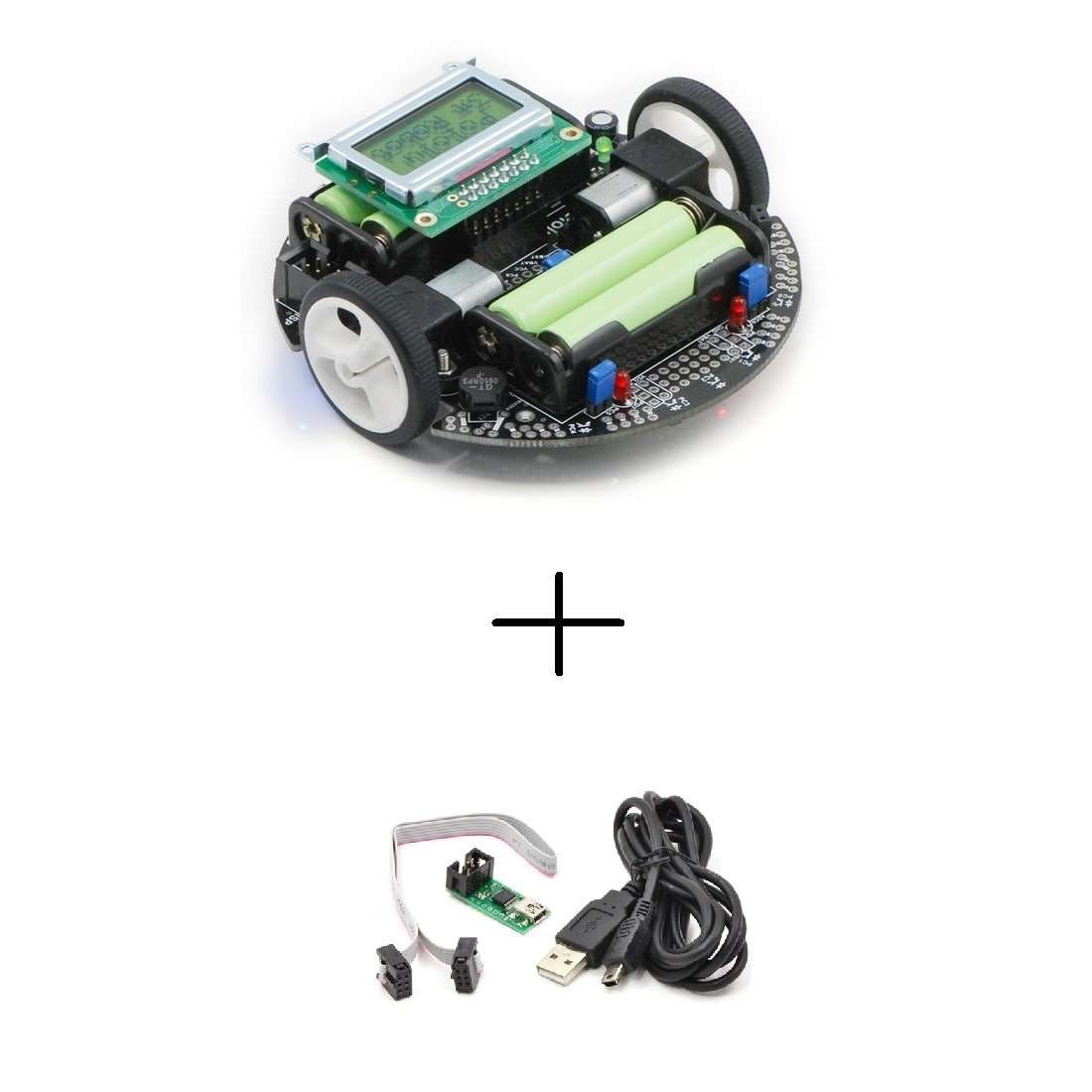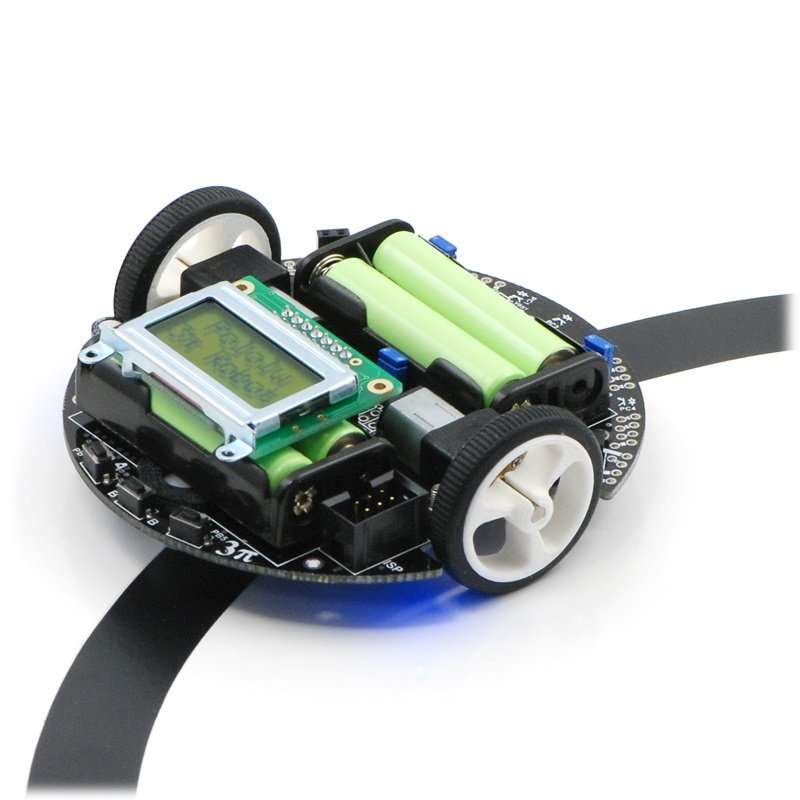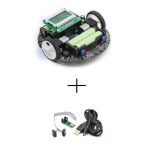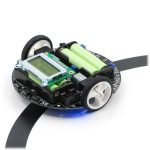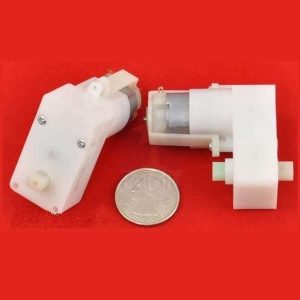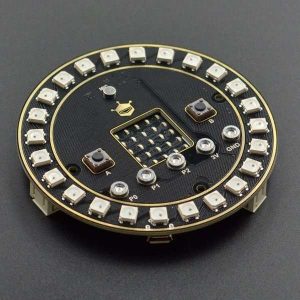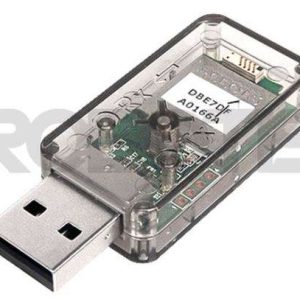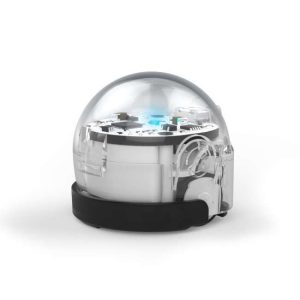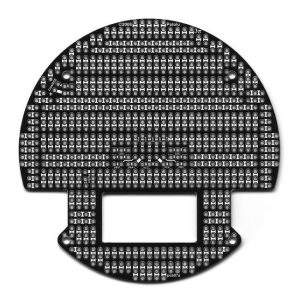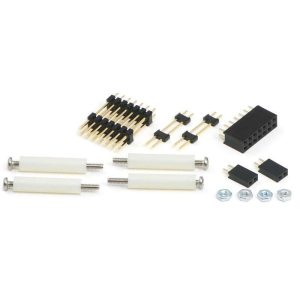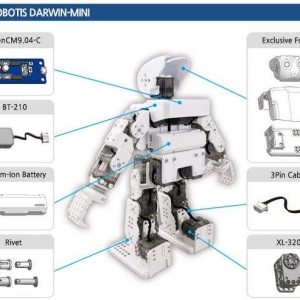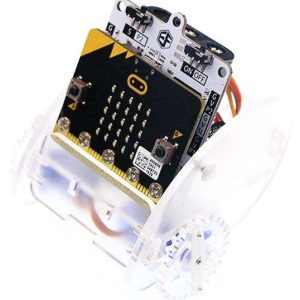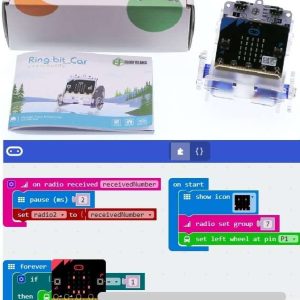The Pololu 3pi robot is a complete, high-performance mobile platform featuring two micro metal gearmotors, five reflectance sensors, an 8×2 character LCD, a buzzer, and three user pushbuttons, all connected to a C-programmable ATmega328 microcontroller. Capable of speeds exceeding 3 feet per second, 3pi is a great first robot for ambitious beginners and a perfect second robot for those looking to move up from non-programmable or slower beginner robots. The kit includes the Pololu USB AVR Programmer.
Overview
The Pololu 3pi robot is a complete, high-performance mobile platform featuring two micro metal gearmotors, five reflectance sensors, an 8×2 character LCD, a buzzer, and three user pushbuttons, all connected to a C-programmable ATmega328 microcontroller. Capable of speeds exceeding 3 feet per second, 3pi is a great first robot for ambitious beginners and a perfect second robot for those looking to move up from non-programmable or slower beginner robots.
The 3pi robot is designed to excel in line-following and maze-solving competitions. It has a small size (9.5 cm/3.7″ diameter, 83 g/2.9 oz without batteries) and takes just four AAA cells (not included), while a unique power system runs the motors at a constant 9.25 V independent of the battery charge level. The regulated voltage allows the 3pi to reach speeds up to 100 cm/second while making precise turns and spins that don’t vary with the battery voltage.
The 3pi robot makes a great platform for people with C programming experience to learn robotics, and it is a fun environment for ambitious beginners to learn C programming. At its heart is an Atmel ATmega328P microcontroller running at 20 MHz and featuring 32 KB of flash program memory, 2 KB RAM, and 1 KB of persistent EEPROM memory. The popular, free GNU C/C++ compiler works perfectly with the 3pi, Atmel’s AVR Studio provides a comfortable development environment, and an extensive set of libraries provided by Pololu makes it a breeze to interface with all of the integrated hardware. The 3pi is also compatible with the popular Arduino development platform. We provide a number of sample programs to show how to use the various 3pi components, as well as how to perform more complex behaviors such as line following and maze solving.
The diagrams below highlight the important features of the 3pi.
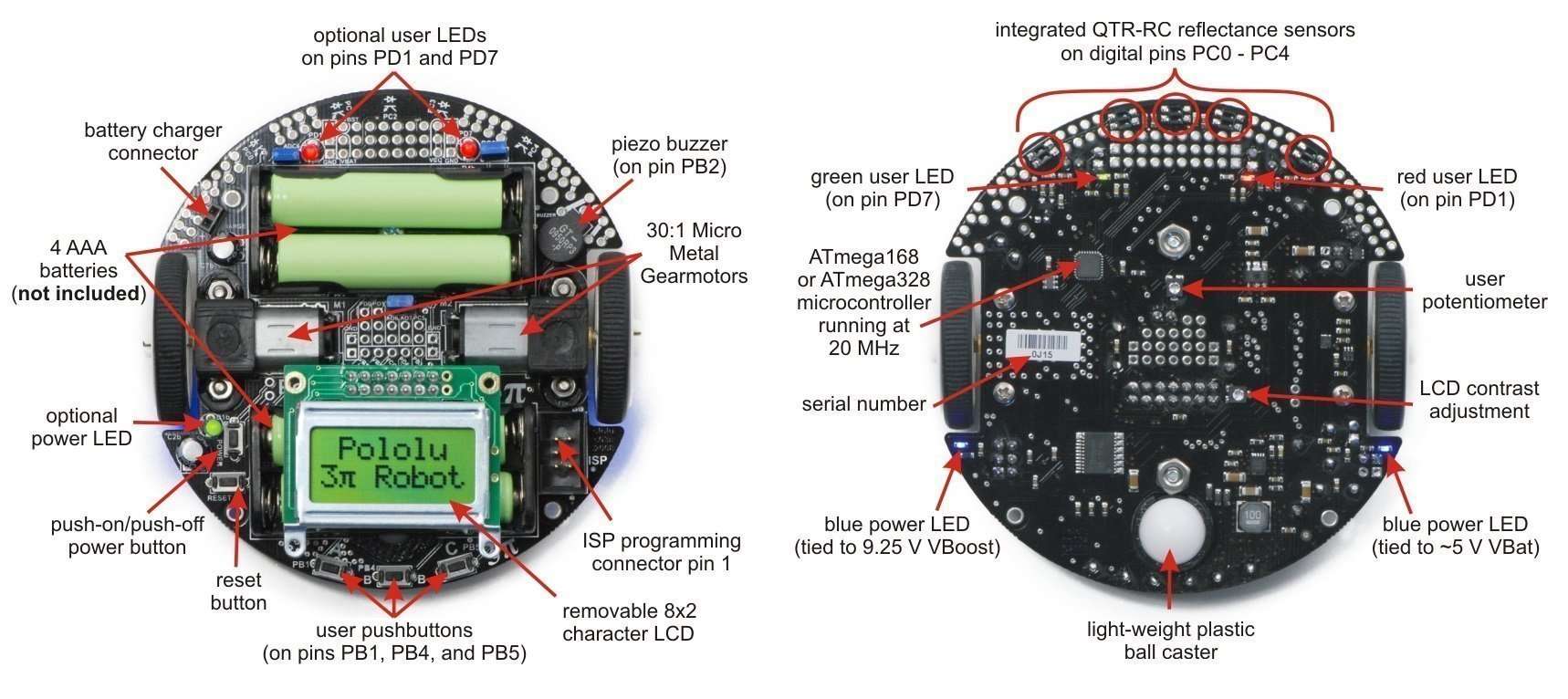
For instructions on setting up and programming the 3pi, including sample code, contest ideas, and more, see the 3pi User’s Guide.
Required Accessories
An external AVR ISP programmer, such as our USB AVR programmer is required to program the 3pi. The 3pi is powered by 4 AAA batteries, which are not included. We recommend rechargeable NiMH cells, which may be at a local store carrying electronics.
Optional Accessories
We currently offer two expansion kits for the 3pi that give you room to augment your 3pi with your own custom electronics. One expansion kit features cutouts that let you view the LCD below and allow you to reach the power button, reset button, and ISP programming header on the base. The other expansion kit has no cutouts and instead replaces the LCD, giving you access to more I/O lines and more prototyping space. These kits can be purchased with PCBs that have either black or red solder masks; the pictures below show the black versions.
Reference
- Pololu 3pi Robot User’s Guide
- Pololu AVR Programming Quick Start Guide
- Pololu AVR C/C++ Library User’s Guide
- Pololu AVR Library Command Reference
- Building Line Following and Line Maze Courses
- 3pi quick-start sheet and schematic
- 3pi simplified schematic diagram
- Line Maze Algorithm Presentation
Recommended links
- Pololu 3pi Forum Section
- > The 3pi discussion section of the Pololu Robotics Forum.
- Tabletop Robotics 3pi Projects
- > A series of interesting, customer-created open source projects for the 3pi robot, including barcode reading, grid navigation, and remote control.
- Simple 3pi Projects for the Arduino IDE
- > These customer-written projects are intended to introduce the novice user to all the components on the 3pi robot and how they can be used while programming with the Arduino IDE. Each project builds on the one before it and comments within the programs are used to provide background information when new items are introduced. By Daniel J. Sullivan, August 2011.
- ATmega328P documentation
- > Atmel’s product page for the ATmega328P.
- AVR Libc Home Page
- > The web site for AVR Libc, which is the standard library of functions that you may use with C on the AVR.
- AVR Freaks
- > AVR community with forums, projects, and AVR news.
- GCC, the GNU Compiler Collection
- > Documentation for GCC, including the AVR GCC C/C++ compilers.
- WinAVR
- > A free, open-source suite of development tools for the AVR family of microcontrollers, including the GNU GCC compiler for C/C++.
- AVR Studio 4
- > The older version of Atmel’s free integrated development environment (IDE) for AVRs, which is no longer supported by Atmel.
- Pololu 3pi: the 10,000 Mile Review
- > Review of the 3pi robot written by R. Steven Rainwater, founding editor of Robots.net.
- Tutorial: AVR Programming on the Mac
- > Customer Michael Shimniok has written a guide to programming AVRs (the Orangutan LV-168, specifically) using the Mac.
- Home-made m3pi robot controlled by Bluetooth keyboard
- > An mbed notebook (in Japanese) showing a 3pi robot with an ARM mbed controlled by Bluetooth keyboard. By Kazuhiro Ouchi, December 2010.

